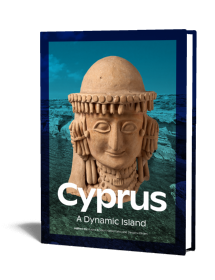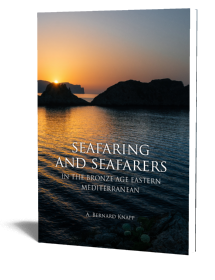Abstract:
In this book the much-debated problem of political organization in Mycenaean Greece (ca. 1400-1200 BC) is analysed and contextualised through the prism of archaeology and contemporary textual (Linear B, Egyptian and Hittite) evidence.
From the early 14th century BC onwards, Hittite texts refer to a land Ahhiya(wa). The exact geographic position of this land has been the focus of academic debate for more than a century, but most specialists nowadays agree that it must have been a Hittite designation for a part, or all of, the Mycenaean world. On at least two occasions, the ruler of Ahhiyawa is designated as LUGAL.GAL –‘Great King’-; a title that was normally reserved for a select group of kings (such as the kings of Egypt, Assyria, Mitanni, Babylon and Hatti itself). The Hittite attribution of this title thus seems to signify the Ahhiyawan King’s supra-regional importance: it indicates his power over other, ‘lesser’ kings, and suggests that his relation to these vassals must have been comparable to the relations between the Hittite King and his own vassal rulers. The apparent Hittite perception of such an important ruler in the Mycenaean world is, however, completely at odds with the prevailing view of the Mycenaean world as a patchwork of independent states, all of which were ruled by a local ‘wanax’ -King.
The papers in this volume address this apparent dichotomy and discuss various interpretations of the available evidence, and contextualise the role of the ruler in the Mycenaean world through comparisons with the contemporary Near East.
“This essential work of synthesis provides overviews by leading scholars of the culture and social organization of Mycenaean Greece, including its interactions with Minoan/Mycenaean Crete and the societies of the Eastern Mediterranean.”
- Malcolm H. Wiener, Aegean prehistorian and founder of the Institute of Aegean Prehistory (INSTAP).
“The in-depth and fascinating papers in this volume, concerning the related concept of kingship and the location of Ahhiyawa in mainland Mycenaean Greece, provide much to think about and will be an important part of the discussions going forward. Kudos to the authors and editors!”
- Eric H. Cline, Professor of Classics and Anthropology at The George Washington University, best-selling author of “1177BC: the year civilization collapsed”, and Co-Director of the Tel Kabri Archaeological Project.
Contents
1. INTRODUCTION
J. Kelder, W. Waal
2. MY BROTHER, A GREAT KING, MY PEER. EVIDENCE FOR A MYCENAEAN KINGDOM FROM HITTITE TEXTS
W. Waal
3. WHAT CONCLUSIONS MIGHT BE DRAWN FROM THE ARCHAEOLOGY OF MYCENAEAN CIVILISATION ABOUT POLITICAL STRUCTURE IN THE AEGEAN?
O. Dickinson
4. NO KINGS, NO INSCRIPTIONS, NO HISTORICAL EVENTS? SOME THOUGHTS ON THE ICONOGRAPHY OF RULERSHIP IN MYCENAEAN GREECE
F. Blakolmer
5. DIE MYKENISCHE STAATENWELT: ZWISCHEN MYKENE UND THEBEN
M. Banyai
6. A GREAT KING OF ALASHIYA? THE ARCHAEOLOGICAL AND TEXTUAL EVIDENCE
E. Mantzourani, K. Kopanias, I. Voskos
7. EPILOGUE
J. Kelder, W. Waal


Dr.
Jorrit M. Kelder
Jorrit Kelder is an associate at the sub-Faculty of Near and Middle Eastern Studies of the University of Oxford (UK), and has published widely on Mycenaean political structures and on connections between the Late Bronze Age Aegean to Egypt, Anatolia and the Balkan.
read more

Dr.
Willemijn J. I. Waal
Willemijn Waal is a Lecturer in Hittitology at Leiden University (the Netherlands) and has published extensively on Hittite scribal practices, literary and oral traditions in the Ancient Near East, and on the emergence of writing in Anatolia and the Aegean world.
read more












